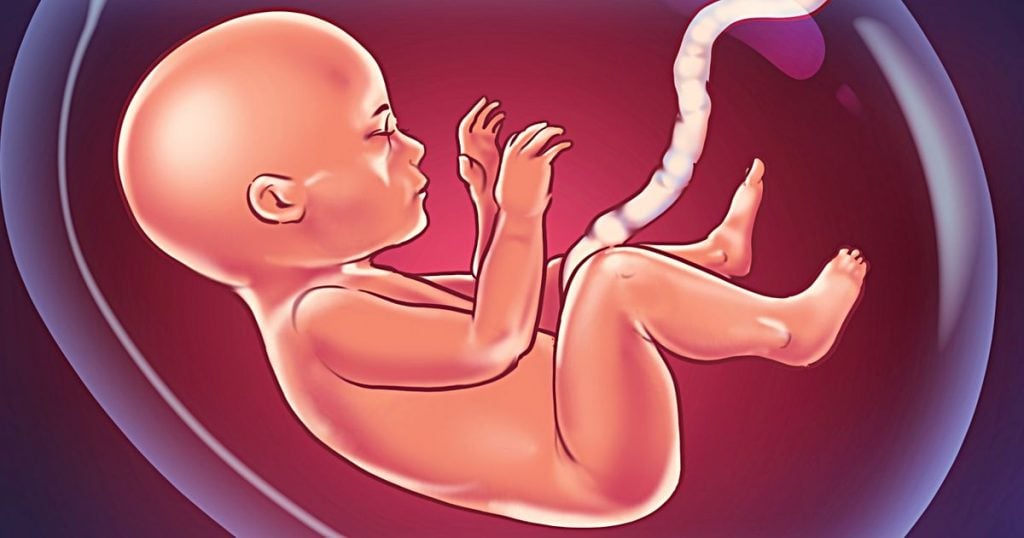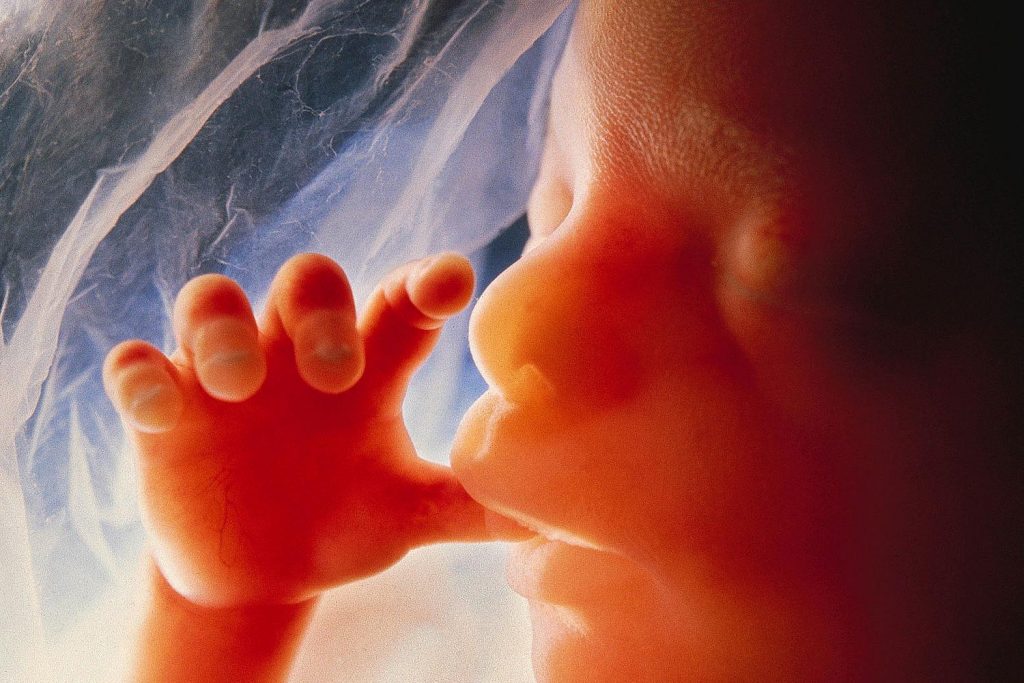The debate concerning the first day of pregnancy is an interesting one. The first day of your last menstruation before conception is important. This is the first day of pregnancy and it determines when you will deliver.
It may sound strange, but your health provider will inquire about this day. It is used to calculate how old your pregnancy is and when to expect your child.
The stages of growth are divided into three trimesters. Here is a breakdown of how the development takes place each month.

Month 1 (Weeks 1 to 4)
In month 1, most parts of the baby begin to develop. The amniotic sac and fluid develop to cushion the embryo. The placenta also develops.
The shape of the head with dark circles for eyes develops, as well. The mouth, throat, and lower jaw also start to take shape.
Blood cells begin taking shape in preparation for circulation. In terms of size, the baby is about ¼ inch.
Month 2 (Weeks 5 to 8)
Ears begin as little bits of skin on the sides of the head. Tiny buds which later grow into arms and legs also develop.
At the end of the 8th week, the baby’s head is now larger than other body parts. Bones begin to replace cartilage, and it is at this point that the skull begins to develop.
Through scanning, the heartbeat of the fetus can be detected. In terms of size and weight respectively, the baby is more than 1 inch and weighs more than 1/30 of an ounce.
Month 3 (Weeks 9 to 12)
By the end of the third month, most of the baby’s organs have fully developed. The fetus begins to explore by opening and closing its feet.
However, the organs require further growth to function properly. It is in this month that reproductive organs of the baby form.
Determining the sex of the baby using ultrasound is still difficult. The fetus is now more than 4 inches and weighs about 1 ounce.
Month 4 (Weeks 13 to 16)

In the 4th month, systems have started to function – the nervous system in particular. The toes, fingers, eyelids, nails, eyelashes, hair, and eyebrows are formed.
Teeth and bones become denser. The baby can suck its thumbs, stretch, yawn, and make faces. Using a doppler, the doctor can listen to the heartbeat of the fetus.
The baby is now about 6 inches and weighs 4 ounces. Because of the size, sex is now easily determinable using ultrasound.
Month 5 (Weeks 17 to 20)
At this stage, baby movements are evident. This is because the baby is developing strong muscles and exercising them. At first, these movements can feel like a flutter.
The hair begins to grow on the head of the baby. Shoulders, back, and temples get covered by protective hair-like structures called lanugo. Lanugo feds out during the first week after birth.
The rest of the body is covered by vernix to protect the skin of the baby from long exposures to amniotic fluid. At the end of five months, the baby is now 10 inches and weighs slightly less than 1 pound.
Month 6 (Weeks 21 to 24)
The main development at this stage is the veins. The skin of your baby is translucent, and the veins can easily be spotted. It is also possible for the baby to open and close its eyes.
The baby’s senses are responsive. In case of a loud bang, the baby will move or have an increased pulse rate. The fetus is now 12 inches and weighs about 2 pounds.
Month 7 (Weeks 25 to 28)
At this stage, your baby continues to mature and develop other organs. All the senses are functional, and the baby responds to light, pain, and sounds. The amniotic fluid starts to diminish with time.
The baby can survive in the NICU if born prematurely at this month. The fetus is now 14 inches and weighs slightly below 4 ounces.
Month 8 (Weeks 29 to 32)
The main development at this stage is the maturing of the brain. Apart from the lungs, the rest of the internal organs are fully developed.
The brain continues to develop rapidly. At the end of 8 months, the fetus is now 18 inches and can weigh more than 5 pounds.
Month 9 (Weeks 33 to 37)
The lungs are at the final stages of maturity at this point. There is not much happening this month, as the baby is fully developed and ready for delivery.
Baby kicks are less as compared to the rest of the months, as there is not enough space for movements. The fetus is now about 19 inches and weighs between 6 to 7 pounds.
Conclusion
A baby grows and develops vastly in the span of time it is in the womb. Monitor the growth of your baby to see if it is meeting all the developmental milestones it should.







